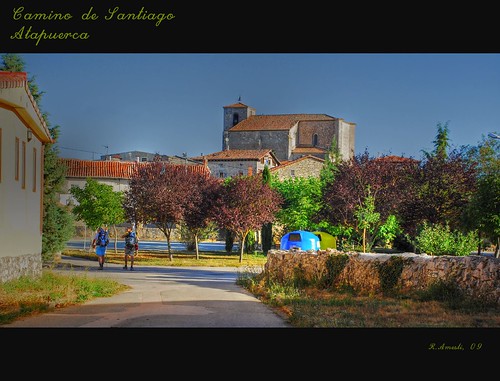
To the Camino de Santiago from San Juan de Ortega to Burgos just have places to stop and enjoy the art. The only point where the history is palpable intensity is Atapuerca. Very near the road can be seen dolmens, also endures a menhir which recalls the battle between Castile and Navarre for dominance in the region, which killed Don Garcia III, King of Navarre. Traditionally, natives of the area have called the End of king huge stone.
The historical chronicles reveal that Ferdinand I sent St. Ignatius de Ona and Santo Domingo de Silos to persuade Don Garcia to avoid the fight. Iñigo Navarro King prophesied that if fighting against his brother die, but the king dismissed him violently. Fatally wounded, Mr. Garcia III received the last consolations spiritual hands of St. Ignatius, who held his head between his knees until he expired. One was September 1054. They are also valuable scientific excavations at Atapuerca, which attest to human settlements for hundreds of thousands of years. It is a visit of great scientific interest but rarely seen.
The trail follows artistic arid zone, rotates to reach the countryside of Pico River, a tributary of Arlanzón. In the background is the graceful church of the Carthusian monastery of Miraflores, is visible beyond the vertical silhouette of the cathedral of Burgos, and in the distance are mountains intuit confused with the skyline.
As a monument is food in the area of Juarros Ibeas where the beans are famous and potpourri.
In 2000, the paleontological site at Atapuerca has been included in the list of World Heritage in the course of a meeting in Australia. The designation has been an added element to position Atapuerca as a center of high interest to both scientists and travelers.

Bon voyage to your destination in Atapuerca!
Leave a Reply
You must be logged in to post a comment.
Recent Comments